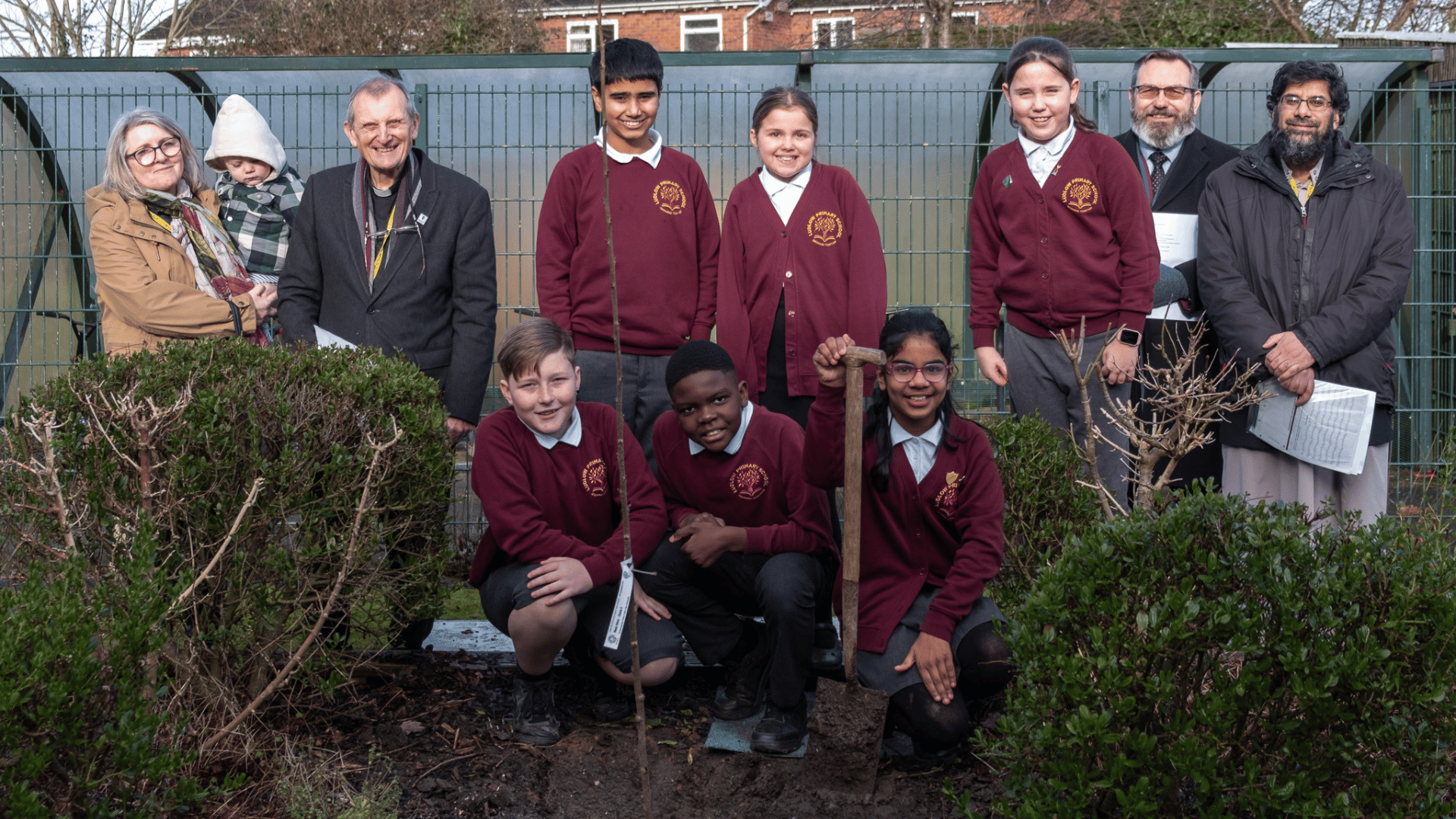
Photocredit; Left to right – Cllr Tracey Huffer, Tommy Huffer, Canon David Wiseman – South Shropshire Interfaith Forum, Gurshaan Singh, Ellodie Lewis, Jessica Byron, Canon Andrew Teale – Chief Executive Officer, Hereford Diocese Multi Academy Trust and Imam Sohayb Peerbhai - South Shropshire Interfaith Forum. Front row – Freddie Morris, Chimuka Munsanje and Juvanna Bright
As many communities, individuals and world leaders sought to mark Holocaust Memorial Day last week, pupils at Ludlow Primary School had a powerful moment of reflection and unity, learning about the importance of building interfaith understanding and compassion for one another.
The day which was attended by local councillors and supported by a group of interfaith leaders and was marked by a poignant assembly and cherry tree planting ceremony at the school. The cherry tree is a symbol of growth, remembrance, and hope.
Children from the school, guided by Imam Sohayb Peerbhai and Canon David Wiseman from the South Shropshire Interfaith Forum, came together to commemorate the Holocaust and other genocides.
This year's memorial held special significance, marking 80 years since the liberation of Auschwitz-Birkenau and the 30th anniversary of the genocide in Bosnia which included the killing of over 8000 Muslims. The cherry tree - the twentieth in the county’s orchard of remembrance - stands as a living testament to the importance of never forgetting historical atrocities and promoting mutual understanding.
Kirstie Hurst Knight, Shropshire Council Member for children and education, highlighted the children's exceptional engagement. "The Holocaust Memorial Day Trust, for whom education is a key consideration, will be heartened to hear how many children took part [in this event], and the deeper understanding that they gained from it. I know that they [the pupils] will cherish their cherry tree as a reminder of the day and as a reminder of the need to show kindness to others now and as they grow up."
In such a rural diocese as Hereford, these events represent more than a moment to remember. It's a powerful illustration of how interfaith dialogue can bridge communities, educate future generations, and promote healing. Bringing together different faith traditions, we can transform remembrance into a forward-looking message of hope and reconciliation which is at the core of Christian and other world faith teachings.
The national Holocaust Memorial Day Trust plans to use this example to showcase how local communities can meaningfully engage with challenging historical narratives, turning potential darkness into an opportunity for learning and connection.
- ENDS -